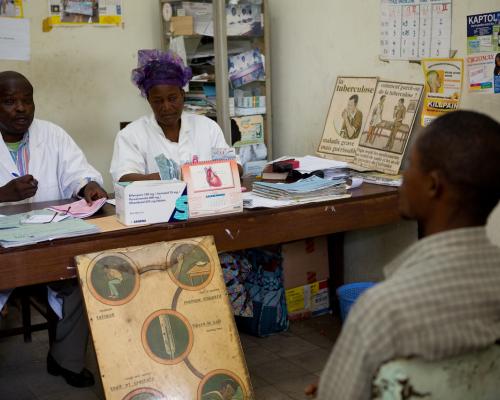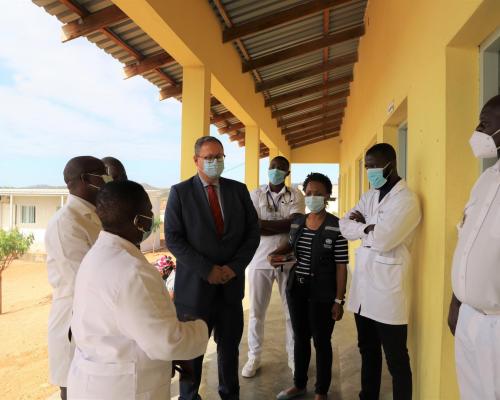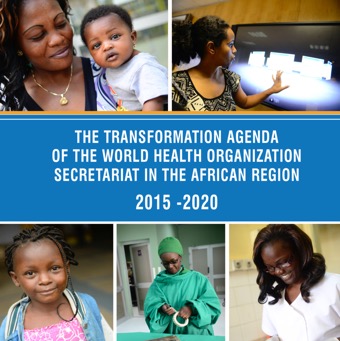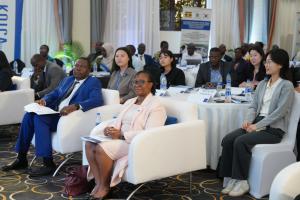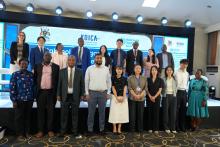WHO, KOICA, and Uganda’s Health Ministry convene high-level national policy dialogue on reproductive, maternal, newborn and child health in Busoga
Kampala, Uganda. The Ministry of Health, World Health Organization (WHO), and Korea International Cooperation Agency (KOICA) convened a high-level national policy dialogue to mark the conclusion of the health system strengthening project for reproductive, maternal, newborn, child, and adolescent health (RMNCAH) in Busoga sub region. The dialogue provided a platform to assess progress, share lessons, and chart the way forward for RMNCAH in Uganda. The dialogue spotlighted the Busoga health system strengthening project as a model for sustainable transformation, drawing attention to its achievements, challenges, and contributions to national RMNCAH priorities.
Funded by the Republic of Korea through KOICA and implemented in partnership with WHO, this five-year project (2020–2025) was implemented in the focus districts of Bugiri, Buyende, Iganga, Kamuli, and Mayuge. It aimed to address systemic challenges in the delivery of RMNCAH services. Key investments were made to strengthen district leadership, enhance the skills of the health workforce, improve referral mechanisms and data systems, promote adolescent sexual and reproductive health rights and life skills, and upgrade health service delivery infrastructure.
“By investing in a region with high mortality, we have achieved meaningful progress. The challenge now is sustaining it. Districts must ensure renovated facilities are well-managed, equipment is used effectively, and health workers communicate better to boost service uptake,” said Dr. Charles Olaro, Director General of Health Services.
Busoga has historically recorded some of Uganda’s poorest RMNCAH indicators, often falling well below national averages. Prior to the interventions, maternal mortality was high, while antenatal care attendance remained low, with few women accessing care in the first trimester. The region lacked functional emergency referral systems, and health facilities faced chronic shortages of trained personnel, essential medicines, and infrastructure. Adolescent health was undermined by limited sexuality education, high rates of teenage pregnancy, and weak community engagement in youth health issues. Emergency transport for obstetric complications largely depended on boda-bodas, placing mothers and newborns at significant risk. Meanwhile, Schools lacked structured sexuality programs, leaving adolescents uninformed and vulnerable.
The COVID-19 pandemic further exposed these weaknesses, increasing teenage pregnancies, school dropouts, and disrupting access to essential services. In response, the Ministry of Health and WHO Uganda, with KOICA’s support, launched a comprehensive health system strengthening initiative to transform RMNCAH outcomes in the region.
“In Busoga, we sought to address systemic gaps in RMNCAH by investing in infrastructure, workforce capacity, data systems, and community engagement. These interventions reflect KOICA’s broader commitment to universal health coverage and reducing preventable maternal and child deaths in line with Uganda’s national goals,” said Ms. Jihee Ahn, KOICA Uganda Country Director.
The project delivered measurable improvements across key RMNCAH indicators;
• First-trimester antenatal care (ANC) attendance increased from 18% in 2019 to 41% in 2024.
• The proportion of women completing at least four ANC visits (ANC 4+) rose from 37% to 51%.
• Skilled birth attendance increased significantly, from 47% to 67%.
• Access to postnatal care within two days of delivery improved dramatically—from 73% to 99%.
“Health is one of the three pillars of our cooperation. This project, supporting over 200 health facilities across nine districts, was designed not just to deliver resources but to build resilient systems. It has made a meaningful contribution to Uganda’s long-term health infrastructure,” added Mr. Choi Heejo, Deputy Chief of Mission, Embassy of the Republic of Korea.
Emergency referral services were enhanced, with 7230 referrals conducted using project-supported ambulances. In the area of adolescent health, over 11,700 students received sexual and reproductive health education. School health clubs became active platforms for peer advocacy, while trained teachers delivered culturally appropriate content. Additionally, the project fostered linkages between schools and health facilities, contributing to the sustainability of adolescent-friendly health services and improving access to care for young people.
The project drew lessons from regional models like Rwanda’s community health worker program and Ethiopia’s Health Extension Program, emphasizing the value of inclusive, decentralized, and innovative health systems.
“This project was not merely about service delivery; it was about transforming the system, strengthening district-level leadership, building health worker capacity, investing in resilient infrastructure, and pioneering adolescent-centered innovations that have already begun to shift behaviours, reduce stigma, and restore hope,” said Dr. Kasonde Mwinga, WHO Representative in Uganda.
Dr Mwinga added, “We must now rally collective leadership, sustained investments, and robust accountability to ensure that no woman dies while giving life and no child is denied the right to survive and thrive.”
As Uganda integrates Busoga’s strategies into its national RMNCAH Sharpened Plan and Vision 2040, WHO reaffirms its commitment to supporting the country’s journey toward Universal Health Coverage.
